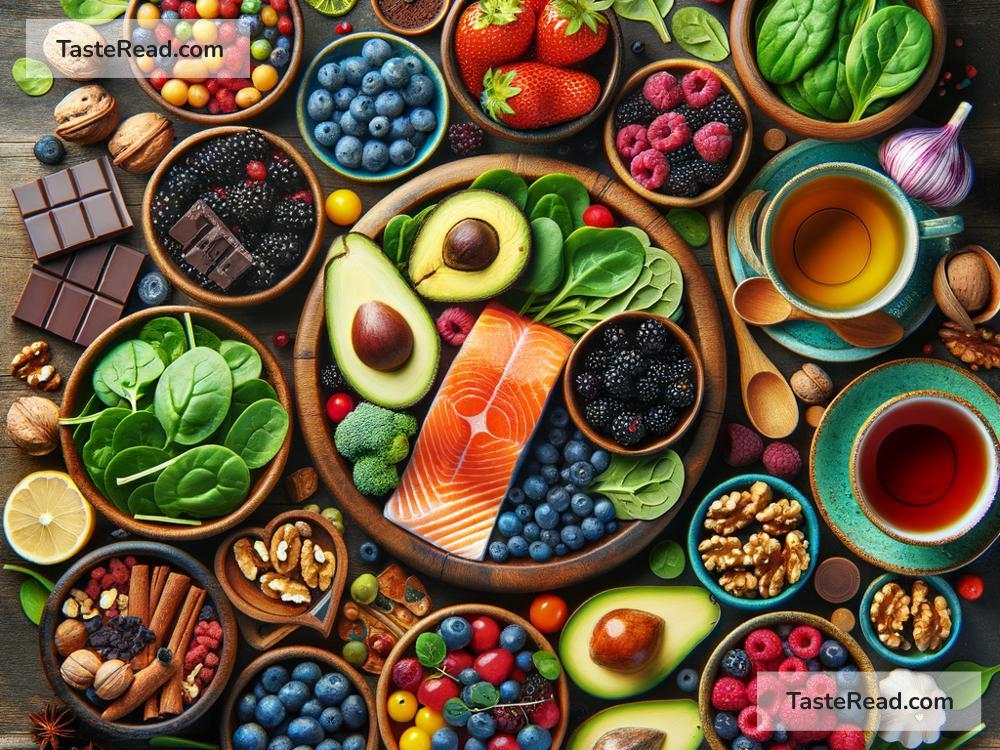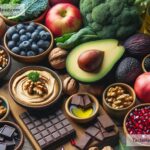Foods That Help Repair Blood Vessels and Keep Them Healthy
Your blood vessels—like arteries, veins, and capillaries—play a huge role in keeping your body healthy. They carry oxygen and nutrients to your cells and remove waste products. Over time, however, these blood vessels can get damaged due to poor diet, stress, or unhealthy habits. But here’s some good news: the food you eat can actually help repair and protect your blood vessels. In this blog, we’ll explore some simple, everyday foods that can make a big difference.
Why Blood Vessel Health Matters
Before we dive into the food list, let’s quickly talk about why repairing blood vessels is important. Damaged blood vessels can lead to various health problems like high blood pressure, heart disease, and even strokes. Keeping them healthy ensures good blood circulation, which means your organs and tissues get the nutrients and oxygen they need to function properly.
Now, let’s look at the foods that can enhance blood vessel repair and overall vascular health.
1. Leafy Greens
Leafy greens like spinach, kale, arugula, and Swiss chard are powerhouse foods for repairing blood vessels. They are rich in nitrates, natural compounds that help improve blood flow and lower blood pressure. When you eat leafy greens, your body converts these nitrates into nitric oxide—a molecule that relaxes and widens your blood vessels, enabling better circulation.
Additionally, these greens are packed with antioxidants and vitamin K, both of which help repair damaged blood vessels and prevent plaque buildup.
How to Eat More: Add spinach to smoothies, toss kale into salads, or sauté Swiss chard as a side dish.
2. Berries
Berries like blueberries, strawberries, raspberries, and blackberries are rich in antioxidants, especially flavonoids. Flavonoids help protect and repair your blood vessel walls, reducing inflammation and preventing oxidative stress (damage caused by free radicals). This protection keeps your blood vessels flexible and less prone to hardening or blockages.
Berries also improve circulation and strengthen the endothelial cells—the thin layer of cells lining your blood vessels—that act as a barrier and regulate blood flow.
How to Eat More: Top your oatmeal with berries, blend them into yogurt, or snack on a handful throughout the day.
3. Fatty Fish
Fatty fish like salmon, mackerel, sardines, and trout are excellent sources of omega-3 fatty acids. Omega-3s are heart-healthy fats that reduce inflammation, lower triglycerides (bad fats in your blood), and improve the function of your blood vessels. They also help prevent blood clots and keep your arteries flexible.
By eating fatty fish regularly, you can enhance the repair process of damaged blood vessels and improve circulation.
How to Eat More: Grill salmon for dinner, enjoy sardines on whole-grain crackers, or whip up a fish taco.
4. Nuts and Seeds
Walnuts, almonds, chia seeds, and flaxseeds are packed with healthy fats, fiber, and plant-based nutrients that support blood vessel repair. These foods contain alpha-linolenic acid (ALA)—a type of omega-3—as well as vitamin E, which helps reduce inflammation and improves blood vessel elasticity.
Magnesium, another important mineral found in nuts and seeds, helps relax blood vessels and improves overall circulation.
How to Eat More: Sprinkle chia seeds on your cereal or yogurt, snack on raw almonds, or blend flaxseeds into your smoothies.
5. Citrus Fruits
Citrus fruits like oranges, grapefruits, lemons, and limes are rich in vitamin C. This powerful antioxidant helps repair blood vessel damage and stimulates collagen production—a protein that strengthens and maintains the structure of your blood vessel walls.
Flavonoids in citrus fruits also reduce inflammation, prevent blood clotting, and help control blood pressure.
How to Eat More: Start your day with fresh orange juice, make a citrus salad, or add a splash of lemon to your water.
6. Garlic
Garlic isn’t just a flavorful addition to meals—it’s a superfood for your blood vessels. It contains allicin, a compound that helps reduce blood pressure and stimulates nitric oxide production, which relaxes blood vessels.
Garlic also improves blood flow and reduces the risk of plaque buildup in your arteries, helping your blood vessels stay clear and healthy.
How to Eat More: Add minced garlic to stir-fries, soups, or roasted vegetables.
7. Whole Grains
Whole grains like oats, quinoa, brown rice, and whole wheat bread are excellent sources of fiber. Fiber helps reduce cholesterol levels, preventing blockages in your blood vessels. By improving overall heart health, whole grains contribute to the repair and maintenance of strong arteries and veins.
Whole grains also provide important nutrients like magnesium, which helps relax blood vessels and lower blood pressure.
How to Eat More: Swap white rice for quinoa, enjoy oatmeal for breakfast, or choose whole-grain bread instead of white.
8. Green Tea
Green tea is packed with catechins, antioxidants that help repair blood vessel damage, reduce inflammation, and improve circulation. Drinking green tea daily can protect your blood vessels from the harmful effects of oxidative stress and support their long-term health.
How to Drink More: Brew green tea as a warm drink or enjoy it iced with a squeeze of lemon.
Final Thoughts
Keeping your blood vessels healthy is key to a strong, active lifestyle—and you don’t need to rely on medications to do so. By eating nourishing, blood-vessel-friendly foods like leafy greens, berries, fatty fish, nuts, and citrus fruits, you can help repair damage and improve circulation naturally.
Remember, small changes in your diet can lead to big health improvements. Start adding these heart-smart foods to your meals and enjoy the benefits of healthy blood vessels!


